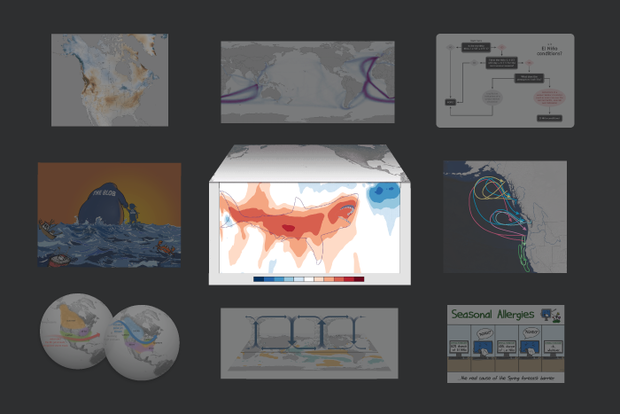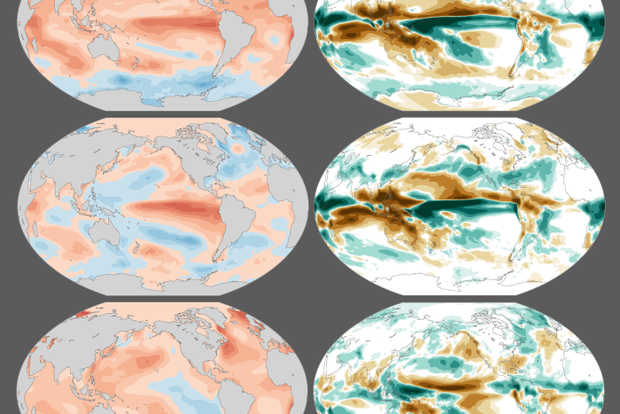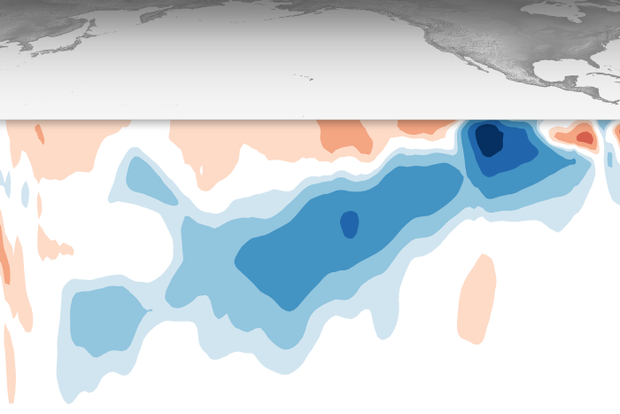ENSO Blog
After a year of dominance, El Niño released its hold on the tropical Pacific in May 2024, according to NOAA’s latest update. El Niño—the warm phase of the El Niño-Southern Oscillation (ENSO), our planet’s single largest natural source of year-to-year variations in seasonal climate—has been disrupting climate in the tropics and beyond since May 2023, likely contributing to many months of record-high global ocean temperatures, extreme heat stress to coral reefs, drought in the Amazon and Central America, opposing wet and dry precipitation extremes in Africa, low ice cover on the Great Lakes, and record-setting atmospheric rivers on the U.S. West Coast.
(That’s an incomplete list! I’d …
Read article
It’s hard to believe that ten years ago a ragtag group of El Niño-Southern Oscillation (ENSO) scientists teamed up with an impossibly patient and wise editor and data visualization team at Climate.gov to start this blog. And it’s even harder to fathom how popular the ENSO Blog has become; we've had 6.6 million lifetime page views and nearly half a million readers in the past year alone. So, thank you to all of our readers who have stuck with us as we delved into some amazingly complex and nerdy topics (and some amazingly awful puns) over the years.
And what better way to celebrate ten years than to shamelessly steal a time-honored tradition in the TV sitcom world, the clip show! But inste…
Read article
El Niño weakened substantially over the past month, and we think a transition to neutral conditions is imminent. There’s a 69% chance that La Niña will develop by July–September (and nearly 50-50 odds by June-August). Let’s kick off the ENSO Blog’s tin anniversary with our 121st ENSO outlook update!
Attention!
First things first: our beloved editor, Rebecca Lindsey, has trained us all very well, including being sure to acquaint our newer readers with the fundamentals of the El Niño/Southern Oscillation climate pattern, or ENSO. ENSO has two opposite phases, La Niña and El Niño, which change the ocean and atmospheric circulation in the tropics. Those changes start in the Pacific Ocean a…
Read article
Editor’s Note: Clara Deser and Stephen Yeager presented this work at a seminar (video here) in early March 2024, permitted us to share their research, and reviewed this article. They are preparing a manuscript, which is tentatively titled “Predicting the 2023/2024 El Nino and its climate impacts over North America” which will include additional technical details.
Climate scientists are basically cats. Climate forecasts, especially those generated from complex computer models, are their balls of yarn – bundles that hide an entangled mess of complex interactions that lie beneath the surface. We all know what happens when a cat sees a messy, tangled knot of string. They stalk it, pounce, and…
Read article
The El Niño of 2023–24 is weakening. Forecasters estimate an 85% chance that El Niño will end and the tropical Pacific will transition to neutral conditions by the April–June period. There’s a 60% chance that La Niña will develop by June–August. Overall, the forecast this month is very similar to last month, and we continue to expect La Niña for the Northern Hemisphere fall and early winter (around 85% chance).
La Niña and El Niño are opposite phases of the El Niño-Southern Oscillation climate pattern. “ENSO” for short. Just like El Niño, La Niña changes the ocean and atmospheric circulation in the tropics. Those changes start in the Pacific Ocean and then ripple around the world in predi…
Read article




